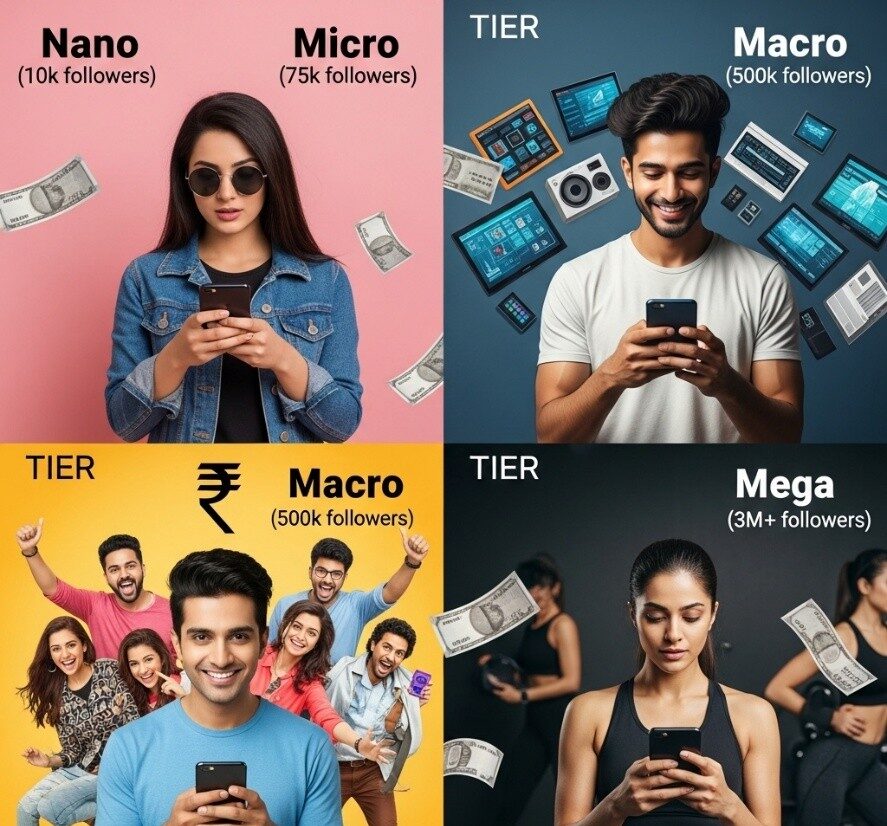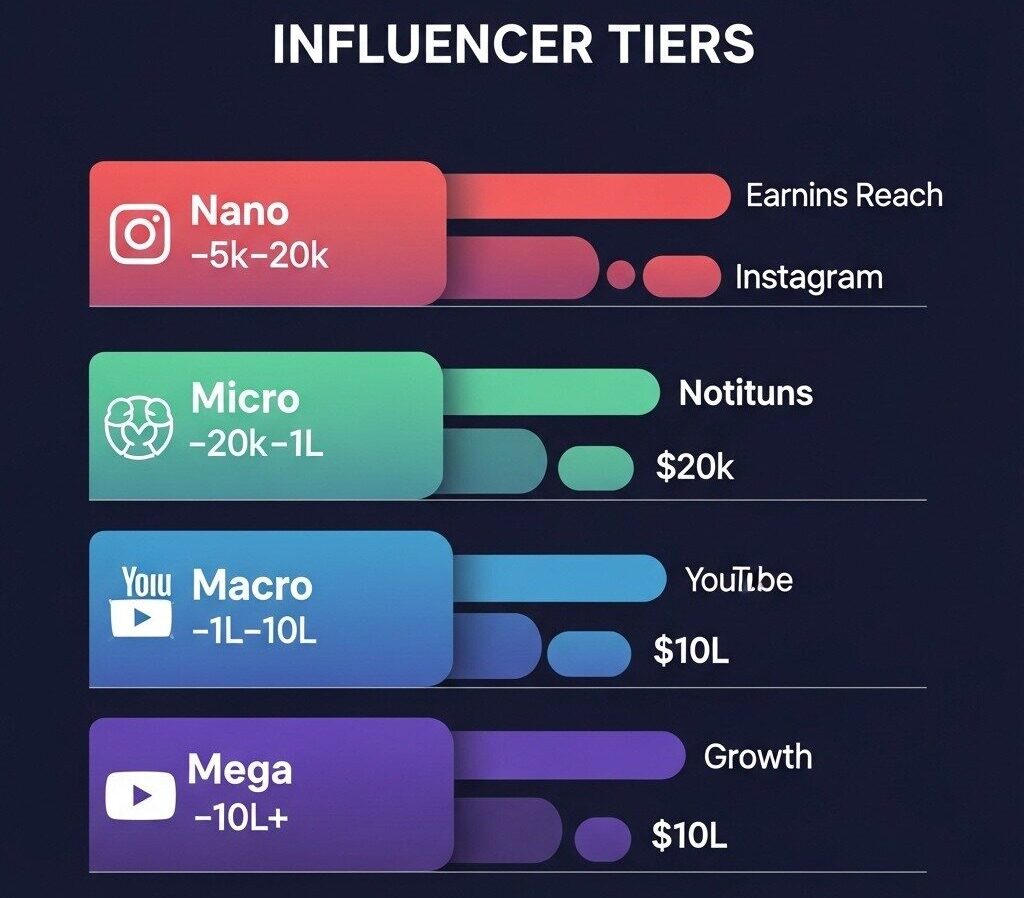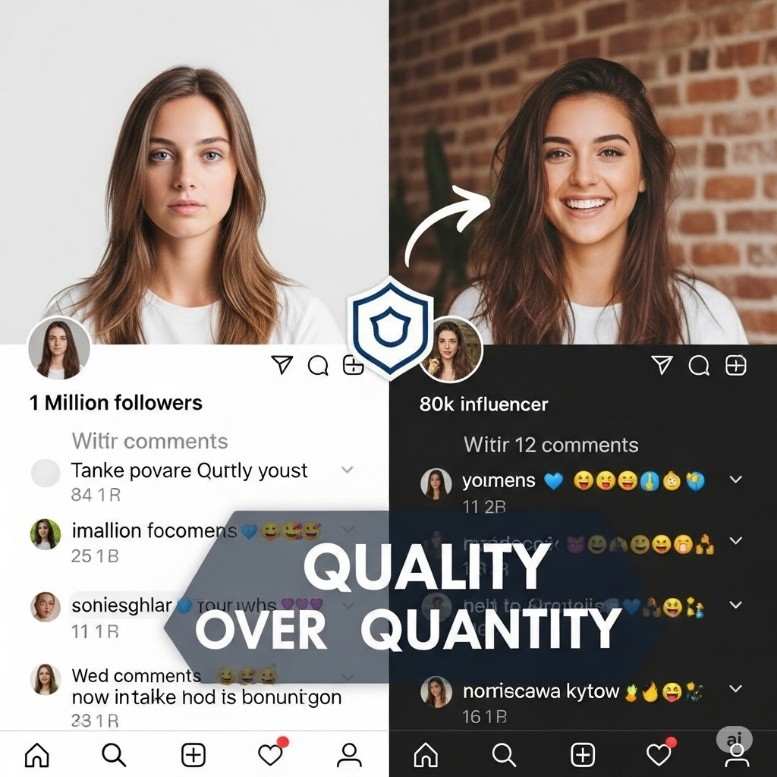In the kaleidoscopic world of social media, Indian influencers have emerged as the new-age celebrities, commanding audiences that span millions. The allure of the digital stage is undeniable—glamour, recognition, and, crucially, lucrative paychecks. But beyond the glossy Instagram posts and viral videos lies a complex and nuanced financial landscape. How much do Indian influencers truly earn? This exploration peels back the curtain to reveal the real numbers behind the digital fame.
How Much Do Indian Influencers Actually Earn? The Real Numbers
- 51 Views
- elfoxisdigital@gmail.com
- September 11, 2018
- Social Media & Influencers
Table of Contents
ToggleHow Much Do Indian Influencers Actually Earn? The Real Numbers
Introduction
Defining Influencer Tiers
Influencers are not a monolith; their earning power often depends on their follower count, categorized into distinct tiers. Nano influencers typically have between 1,000 to 10,000 followers, often cultivating tight-knit communities. Micro influencers range from 10,000 to 100,000 followers, balancing reach with engagement. Macro influencers boast 100,000 to a million followers, while Mega influencers surpass the million mark, becoming household names. Each tier offers different monetization avenues and earning potential.

Revenue Streams for Indian Influencers
The income tapestry of influencers is woven from multiple threads. Sponsored posts remain the primary source, with brands paying to feature their products in posts or stories. Affiliate marketing adds another dimension, where influencers earn commissions from sales generated through tracked links. Some expand into merchandising, selling branded apparel or accessories. Additionally, speaking engagements and event appearances add offline revenue. Diversification is key to building a robust income.

Average Earnings by Tier
Earnings vary dramatically by influencer tier and platform. Nano influencers might earn ₹5,000 to ₹20,000 per sponsored post, while micro influencers can command ₹20,000 to ₹1,00,000. Macro influencers often see deals worth ₹1,00,000 to ₹10,00,000, with mega influencers pulling in upwards of ₹10,00,000 per campaign. Instagram and YouTube dominate monetization, though regional platforms like MX TakaTak are gaining ground. Monthly incomes can range from a modest ₹20,000 for newcomers to crores for top-tier stars.

Case Studies of Top Indian Influencers
Consider Bhuvan Bam, whose multifaceted content and YouTube presence yield income from ads, brand deals, and merchandise. Kusha Kapila leverages her comedic niche across Instagram and YouTube, supplementing income through brand collaborations. Prajakta Koli’s wide appeal combines sponsored content with acting gigs. These influencers exemplify how a blend of platforms and revenue streams scales earning capacity far beyond follower counts alone.
The Impact of Niche and Content Type
Certain niches attract premium paychecks. Fashion and beauty influencers often secure high-value brand endorsements, reflecting the sector’s marketing budgets. Fitness influencers benefit from growing health-conscious audiences. Gaming and tech creators tap into younger demographics with strong engagement, while comedy and entertainment carve broad appeal. The specificity and spending power of an influencer’s audience largely dictate deal size.
Hidden Costs and Taxes Influencers Face
Behind every polished post lies a cost: professional photography, video editing, stylists, and even travel expenses accumulate quickly. Influencers often share revenue with managers or agencies, further reducing net income. Navigating India’s evolving tax landscape poses additional challenges, with Goods and Services Tax (GST) and income tax regulations complicating declarations. Financial prudence is critical.
The Role of Engagement Over Follower Count
Brands increasingly scrutinize engagement metrics—likes, comments, shares—over sheer follower numbers. A million passive followers hold less value than 100,000 actively engaged ones. Unfortunately, this has led to a proliferation of fake followers and influencer fraud, muddying the waters and making authenticity paramount.

Challenges to Monetization in India
The Indian influencer space is fiercely competitive and rapidly saturating. Brands often hesitate to commit large budgets to unproven influencers, preferring established names. Algorithm shifts on platforms can abruptly impact reach and income. Sustaining a steady revenue stream demands continuous innovation and audience connection.
Future Trends in Influencer Earnings
Regional language influencers are emerging as powerful voices, tapping into vast untapped markets beyond metropolitan hubs. The integration of e-commerce—shoppable Instagram posts or YouTube product placements—blurs the line between content and commerce. New platforms and technologies, including live shopping and augmented reality, promise fresh monetization avenues.
Conclusion
The financial reality for Indian influencers is as varied as their content. While a rare few enjoy celebrity-level earnings, most navigate a complex ecosystem of opportunity, expense, and risk. Sustainable success demands savvy audience engagement, diversified revenue streams, and adaptability to a swiftly changing digital landscape. For aspiring influencers, understanding these dynamics is the first step toward turning passion into profit.
Recent Posts
- Real Estate Marketing in 2026 The Survival Guide for the Modern Indian Realtor
- The 2025 Guide: How to Promote Real Estate Business on Social Media Without Being Boring
- Beyond the Hype: Why Do Brands Need Advertising in a Digital World?
- How to Create a Marketing Campaign: A Complete Step-by-Step Guide
- Different Types of Paid Media in Digital Marketing